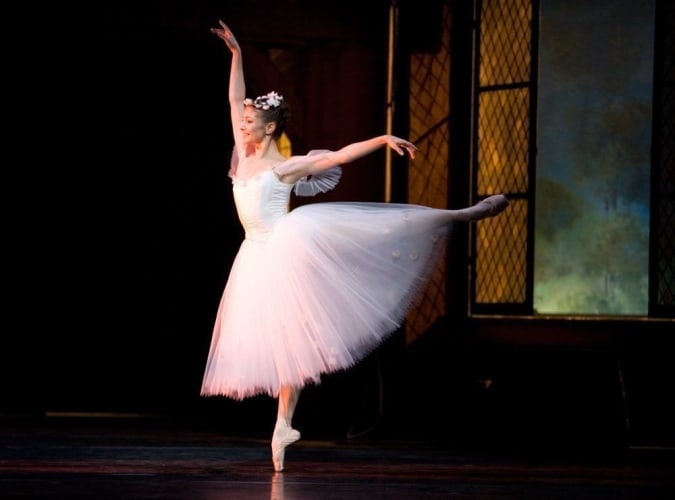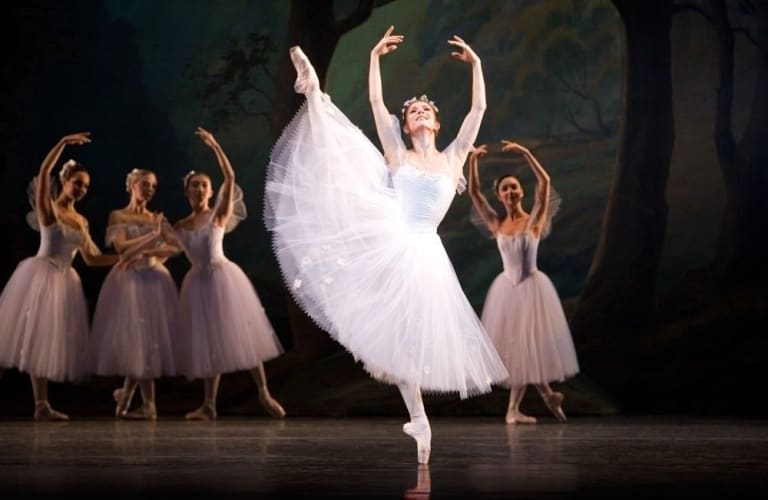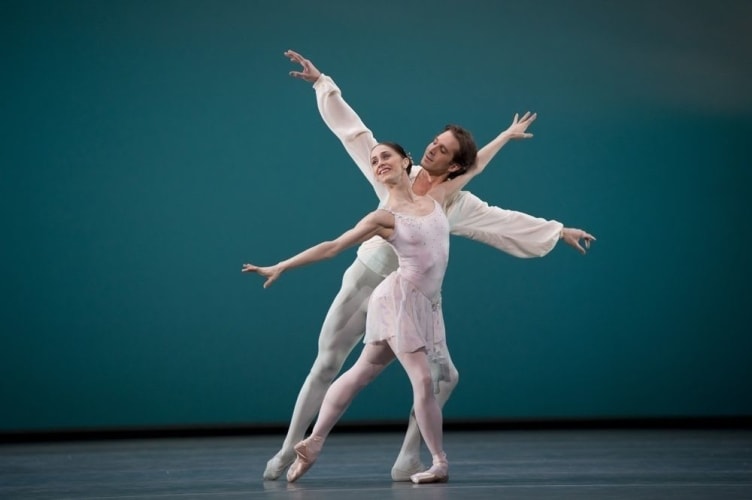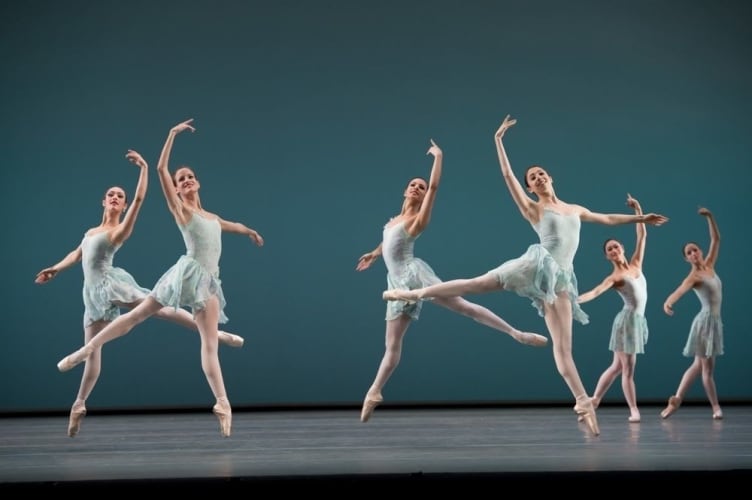An odd coupling, Balanchine’s 1978 eighteen-minute non-narrative dance dazzler with one of the world's oldest surviving romantic ballets, La Sylphide, Bournonville’s 1836 adaptation of the 1832 showcase for Marie Taglioni (choreographed by her father).
But the Royal Ballet is presenting this programme in celebration of ‘the Diamond Jubilee of Her Majesty The Queen’. And Ballo della regina is a long virtuosic reverence. To ballet music from Verdi’s Don Carlos, a mix of Imperial Petipa homage and long-legged American speed and dash, inspired by his last muse, Merrill Ashley, who has staged this production, Balanchine tests the ballerina to her limits.
Marianela Nuñez, hardly off pointe, shimmers and lights up the stage with her smile and her balletic feat of high leaps, intricate leg and footwork in fast solo variations and spirited partnering. Nehemiah Kish, her tall elegant partner, can barely keep up, but keep up he does—just.
A regal pair in royal white in a jubilation of dance against a sky-blue backcloth tinged with pink promising a golden dawn, which duly appears with majestic aplomb—la reine soleil?
Surrounded by a court of four female soloists in pink (Yuhui Choe, Samantha Raine, Beatriz Stix-Brunell and Emma Maguire), and a corps of twelve in blue, who dash on and off in pretty patterns, seahorses riding the waves of Verdi’s lush romantic and dramatic music, shading tempo and mood.
Bournonville’s ballet, a classic of Romantic ballet, which ushered in a new Romantic era of dance from which sprang the Gothic Romantic ‘white’ ballets such as Giselle, is still the mainstay of the Royal Danish Ballet, where it premiered in 1836.
Steeped in the delicate Bournonville style, Danish dancer and choreographer Johan Kobborg’s production of La Sylphide, an adaptation of an adaptation, first performed by the Royal Ballet in 2005, is delightful. And the casting of Alina Cojocaru, a reincarnation of Marie Taglioni (with whom Bournonville had danced), as the Sylph, is perfection.
In a Scottish genre Walter Scott scene, antler chandelier, wood paneled walls, open fire, dozes a young man James on the eve of his betrothal to Effie (Emma Maguire), his male friends asleep slumped over a table, he in a chair by the fire. A Sylph appears and studies him with impish pleasure.
He wakes up to catch a glimpse of her before she disappears up the chimney. A dream of something other, a fear of settling down, a longing for more than is on offer, a psychological drama? He has to find her. She appears again at the window, and he dances in ecstatic dance with her, but she slips his reach every time.
James tries to tell his friends about her, but they think he’s away with the fairies. During the joyous Scottish dancing festivities (very colourful plaids), she flits and vanishes, driving him to distraction till he can take the temptation no more and chases after her into the woods.
But he is doomed. Embittered old witch hag Madge, an unwelcome guest at the feast, reads the palms of James, Effie, and his friend Gurn who loves Effie, predicting the outcome. The second act opens with a witch’s cauldron (Madge and her cronies as in the Scottish play) and the casting of the scarf spell that will bind the Sylph in deadly embrace.
A bewitched mortal cannot capture the elusive ethereal however much it may tempt him. Effie marries Gurn (Valentino Zucchetti excellent), and James meets his end by overreaching himself. His desire is destructive, and the dark side claims him. The unattainable expires, as does he in seeking it, jilting his bride in the process. Is there a message here?
Unable to touch her James dances alongside the Sylph, echoing and following her movements in his. Steven McRae matches Alina Cojocaru sprightly steps for steps, both giving tremendous performances. Delicate footwork, rapier legs from him, soft and melting from her, supreme technique and acting. The only one on pointe in the first act, she is air itself, impossible to grasp.
Alina is a tease, a playful spirit, a gossamer will o’ the wisp, enchanted by this golden-haired man. But she meets her nemesis in the vengeful Madge. Kirsten McNally seems to be cornering the character roles lately, and is proving to be a very able actress. Her Madge has a good balance of the earthy, the malevolent, and a mysterious hinterland of bitterness.
Herman Løvenskiold's score, with its hidden motifs, the first act hints of traditional Scottish music (pipes and flute), and the second quoting Rossini’s Stabat Mater, carries the narrative as much as do Henrik Bloch's costumes and the language of mime.



